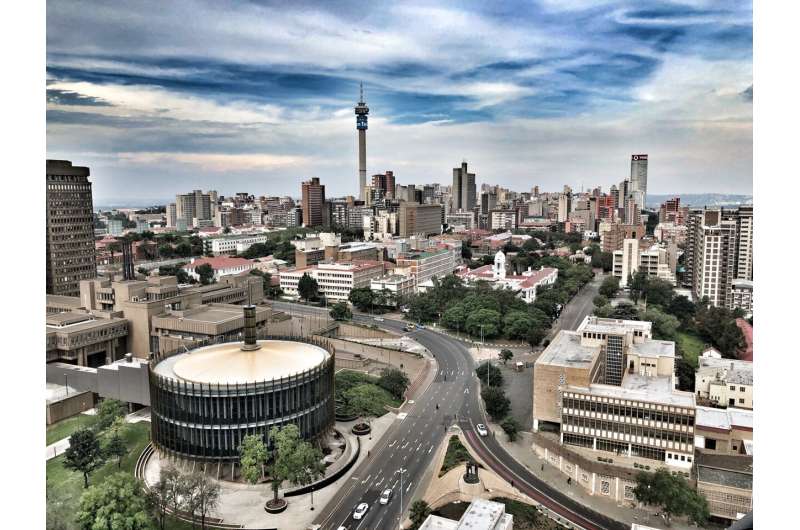
South Africa's experience in piloting a new type of climate finance vehicle can inform debates about how to fund a just transition from fossil fuels to renewable energy.
Two years ago at COP26, South Africa piloted the first Just Energy Transition Partnership, where rich countries help developing countries move faster towards renewable energy. A year later, the South African government unveiled its Just Energy Transition Investment Plan. This set out how it intended to build on and use the partnership funds.
The plan detailed a R1.5 trillion (US$80 billion) investment into a transition to renewable energy, green hydrogen and new energy vehicles. South Africa's cabinet approved the investment plan in November 2023. But there has been resistance to the plan both from civil society and from coal, oil and gas lobbies.
To help deepen public understanding, I recently published a critique of South Africa's Just Energy Transition Partnership. The critique draws on my experience as the elected general secretary of the South African Climate Justice Coalition, a group of over 60 trade union, grassroots, community-based and non-profit organizations working together for transformative climate justice.
I argue that while the partnership could help South Africa shift to cleaner energy systems, its model of funding has drawbacks. First, it seems to favor the interests of foreign capital. Second, it is not going fast enough.
An unjust starting point
Many of the faults of South Africa's unjust energy transition are down to decisions made by the South African government before the plan was adopted. For decades, the government did not invest enough in a just transition to renewable energy. It also neglected the existing fossil fuel energy system and worked to privatize energy.
On top of this already unjust reality, my briefing raises concerns that the funders behind the Just Energy Transition Partnership may shape it to serve their interests. For example, its blended finance model might use public funds to subsidize the private sector to the benefit of international corporations.
Civil society groups, such as Trade Unions for Energy Democracy, and academics Patrick Bigger and Sophie Webber have warned against what they term "green structural adjustment". That's where climate finance is used to compel the economies of the global south to serve the interests of private companies who profit from the green transition.
An unequal transition
South Africa is among the world's most unequal countries, with 10% of the population owning 80% of the wealth. To invest in renewable energy requires access to land and capital, both of which are still concentrated in the hands of the minority.
So, if the energy transition is driven mostly by market forces and left to private companies and individuals, it will likely concentrate the benefits in the hands of the few. This is a significant worry, as new energy generation is now being driven predominantly by the private sector in South Africa.
Another way in which big international finance interests are benefiting is through weakening localization policies, which would ensure components and equipment for green energy are produced locally. The United States' Inflation Reduction Act, for example, was designed to harness major economic benefits by driving green industrialization in America.
Much of the economic benefit of a renewables transition comes from localization and green industrialization. However, only 0.1% of the R1.5 trillion investment plan is dedicated directly to localization. Meanwhile, government procurement policies are weakening localization.
South Africa is one of the worst polluters
Another weakness of the plan is its failure to push for a fast enough transition to renewables. South Africa has one of the most polluting energy and industrial sectors in the world, thanks to being the most coal-intensive energy producer of all G20 nations.
The transition proposed by the South African government under the investment plan is not fast enough. It is well out of line with South Africa's fair share of keeping global warming to 1.5°C as agreed under the Paris Climate Agreement, and more in line with disastrous warming of over 2°C and up to 3°C. Coal, oil and gas lobbies in the country also want to further slow down the transition to renewables.
Resistance from different angles
In South Africa, it is not just climate activists that are pushing back against elements of the transition partnership and investment plan. Fossil fuel lobbies are also opposing the funding plan as a way of slowing climate action.
Climate justice activists therefore need to be careful that progressive-sounding critiques of the partnership are not co-opted by the fossil fuel lobby to undermine climate action altogether. To counteract polluting lobbies, climate justice movements will need to walk a careful line.
What South Africa's experience shows, though, is that climate finance can replicate unequal, neocolonial dynamics through green structural adjustment. This is particularly important as the Just Energy Transition Partnership model is being exported to other countries across the world.
Globally, climate justice activists will need to mobilize to ensure that climate finance is a true fulfillment of climate justice and a payment of the climate debt owed to the global south. As the South African Climate Justice Coalition has demanded, climate finance must deliver meaningful social, economic and ecological justice.
This article is republished from The Conversation under a Creative Commons license. Read the original article.![]()
Citation: South Africa pioneered plans to transition to renewable energy—what went wrong (2023, December 6) retrieved 6 December 2023 from https://techxplore.com/news/2023-12-south-africa-transition-renewable-energywhat.html
This document is subject to copyright. Apart from any fair dealing for the purpose of private study or research, no part may be reproduced without the written permission. The content is provided for information purposes only.
